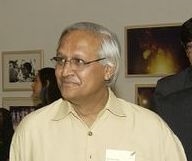 |
| Bunker Roy (Barefoot College Photographers) |
“I had the most snobbish, exclusive education any Indian could have had the misfortune to have,” says Bunker Roy. Educated at the prestigious Doon School in Deridun and at St. Stephen’s College, Delhi, Roy was groomed for a career in the civil or diplomatic service. It was an unlikely start for the man who went on to found the Barefoot College, the only college in India built by the rural poor for the rural poor.
Sanjit “Bunker” Roy was born in 1945 in Burnpur in West Bengal, India. His nickname “Bunker” comes from the Bengali habit of rhyming siblings’ names; his brother’s name was “Shanker.” Roy is proud to be a Bengali. Bengalis, he says, have a reputation for being forward-looking, for being great thinkers and talkers, for being emotional, and for loving music and plays.
What changed the course of Roy’s life was the Bihar famine in the mid 1960s. He went to Bihar “out of curiosity,” he says, “to get to know another bit of India,” but the suffering he witnessed affected him deeply. Subsequently, much to his mother’s distress (she refused to speak to him for two years), he dedicated himself to improving the lives of the rural poor.
“How is it possible that some people live in such penury – and we go through the best of education but don’t give anything back?” Roy asks. It was this combination of conscience and anger that drove him, first to spend five years blasting wells in villages around the Ajmar district of Rajasthan, and then, in 1971, to found the Barefoot College in Tilonia.
 |
| A solar engineer at the Barefoot College |
The term “Barefoot College” is both literal and symbolic. Millions of people in India live and work barefoot; but the title is also used as a symbol of respect for the knowledge that the poor have.
The College takes men, women and children who are illiterate and semi-literate from the lowest castes, and from the most remote and inaccessible villages in India, and trains them at their own pace to become “barefoot” water and solar engineers, architects, teachers, communicators, pathologists, midwives, IT workers, accountants, and marketing managers. Once trained, these villagers work within their own communities, thus making them less dependent on “outside” skills.
The philosophy of Mahatma Gandhi is reflected in the work style and lifestyle of the College. Everyone eats, sleeps and works on the floor. No one can receive more than $100 per month. Traditional knowledge, village skills and practical wisdom are given greater respect than paper qualifications, and reading and writing are not seen as essential. “Just because someone cannot read or write does not mean he or she is uneducated,” Roy points out.
The College’s achievements are staggering. Its barefoot engineers have provided solar powered lighting to over 136 virtually inaccessible Himalayan villages; over 15,000 children have been educated at Barefoot College night schools; and thirteen villages and 15,000 people now benefit from community piped water supply systems, designed, planned and implemented entirely by the local people.
The barefoot approach clearly works, and there are now 20 such colleges in 13 states in India. Plus the college is now involved in training villages from other countries, including Afghanistan, Ethiopia, Bhutan, Senegal and Sierra Leone. But the real achievement, says Roy, is the process rather than the result – the fact that the community has done this on their own, by sharing their own knowledge and skills.
One of Roy’s greatest heroes is his wife, Aruna. “She is a street fighter,” he says. “She fights Goliaths and seems to win.” The other is Gandhi. His favourite saying of Gandhi’s is: “First they ignore you, then they laugh at you, then they fight you, then you win.”
Page created on 2/26/2007 10:31:31 AM
Last edited 1/4/2017 11:14:40 PM
